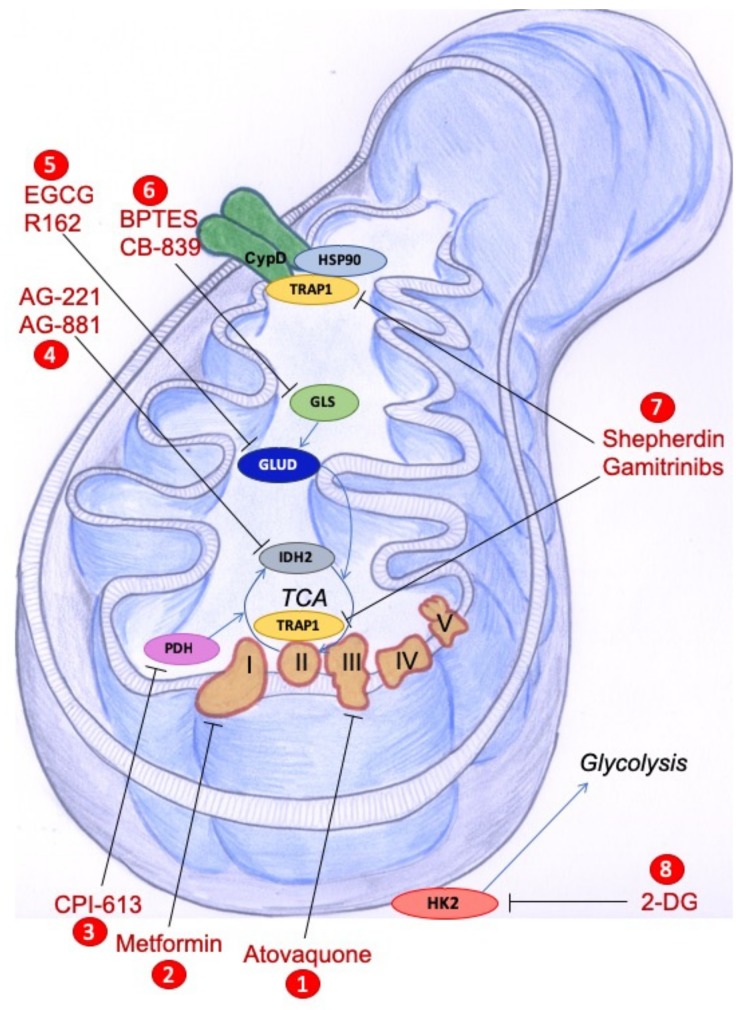Figure 1.
Schematic representation of agents targeting components of mitochondrial metabolism that have been proposed in cancer treatment (either approved, already in clinical trials, or tested in preclinical models). Only the mitochondrial targets addressed in this review are indicated in the figure. Specifically, (1) atovaquone is a FDA-approved antimalarian drug, whose repurposing proposed it as mitochondrial complex III inhibitor in cancer cells; (2) metformin inhibits mitochondrial complex I; (3) CPI-613 targets catalytic and regulatory functions of the PDH complex, the enzyme converting pyruvate into acetyl-CoA to be used in the TCA cycle; (4) AG-221/AG-881 compounds target mutant IDH2; (5) EGCG/R162 block TA/GLUD, that converts glutamate to the TCA cycle intermediate alpha-ketoglutarate or (6) BPTES/CB-839 inhibition of GLS that converts glutamine to glutamate, have shown efficacy in preclinical studies; (7) shepherdin and gamitrinibs are inhibitors of the mitochondrial chaperones TRAP1 and HSP90, that play roles in ETC complex stability and activity and in resistance to apoptosis through the binding and stabilization of CypD; (8) 2-DG inhibits glycolysis by competing with glucose as substrate for HK2, a mitochondrial membrane associated enzyme in cancer cells. CypD: Cyclophilin D; GLS: Glutaminase; GLUD: Glutamate dehydrogenase; HSP90: Heat Shock Protein 90; IDH2: Isocitrate dehydrogenase 2; PDH: Pyruvate dehydrogenase; TCA: Tricarboxylic acid; TRAP1: TNF Receptor-Associated Protein 1.

